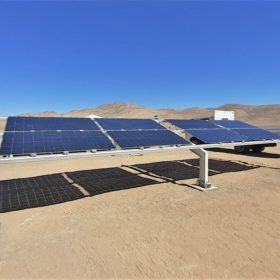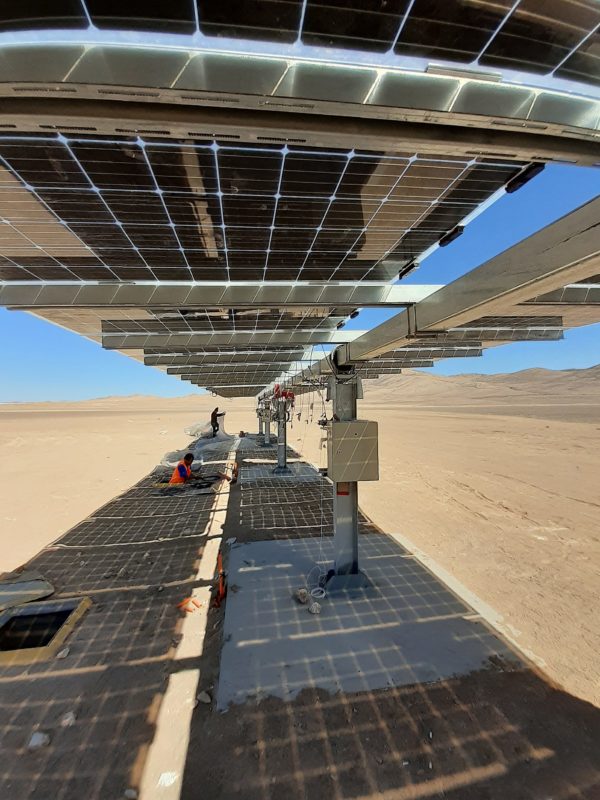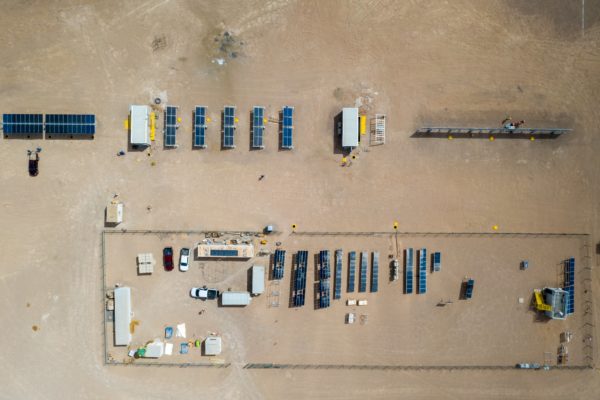
Atamostec, a private-public initiative supported by Chile’s government-run Production Development Corp. and several industrial partners, has developed a new module. The team claims that the bifacial panel offers an additional annual average gain of 11% compared to monofacial PERC modules with the same cell technology.
Chile’s state-run Production Development Corporation (Corfo) has developed a bifacial solar module in partnership with the National Solar Energy Institute (Ines) under the French Alternative Energies and Atomic Energy Commission (CEA) and Germany’s ICS Konstanz research center.

The “Atamo” module was developed by Atacama Module and System Technology (Atamostec) a private-public initiative supported by Corfo and a range of industrial partners, including Ines CEA, ICS Konstant, France’s Engie, Chile’s Colbun and Spain’s Mondrago Assembly, among others.
Atamostec said it is now assessing module performance at Corfo’s testing field in the Atacama Desert, in northern Chile, which offers the best solar radiation in the world. “We are still at the development phase and we can not reveal too many details,” Atamostec spokeswoman Natalia Toro told pv magazine. “The monocrystalline bifacial PERC heterojunction is being tested an installation with 20° inclination and single-axis solar tracker.”
Atamostec said the bifacial module offers an additional annual average gain of 11% compared to monofacial PERC modules with the same cell technology. “This means that if the data is extrapolated to a 100 MW large-scale plant, the ‘Atamo’ panel could generate up to 27 GWh/year of additional energy and, combined with a monitoring system, up to 112 GWh/year of extra energy compared to a fixed monofacial photovoltaic plant during a normal year,” explained Atamostec CTO Elias Urrejola.

Image: Atamostec
Delfina Munoz, a scientist from Ines, said that Atamostec made a wise technological bet to prove that bifacial technology – which is known to work well with snow, given the albedo effect – offers a much higher energy yield in desert conditions than monofacial panels.
“The bifacial modules were not developed for desert conditions only. Therefore, these first data make this option possible for Chile and for the entire high radiation solar belt in the world,” added María Jose Riquelme, Atamostec’s business development manager.
The development of the bifacial panel is part of Corfo’s Development of Photovoltaic Solar Energy Technologies for Desert Climates and High Radiation program, which aims to develop technologies suited for arid conditions and high irradiation in areas such as the Atacama Desert.
The program supports collaborations between companies and technology centers that focus on applied PV system research. It helps to provide financing for up to 70% of the total cost of successful projects, with a maximum of $12 million, via a non-refundable subsidy.
Lắp đặt điện mặt trời Khải Minh Tech
https://ift.tt/2X7bF6x
0906633505
info.khaiminhtech@gmail.com
80/39 Trần Quang Diệu, Phường 14, Quận 3
Lắp đặt điện mặt trời Khải Minh Tech
https://ift.tt/2ZH4TRU
Không có nhận xét nào:
Đăng nhận xét